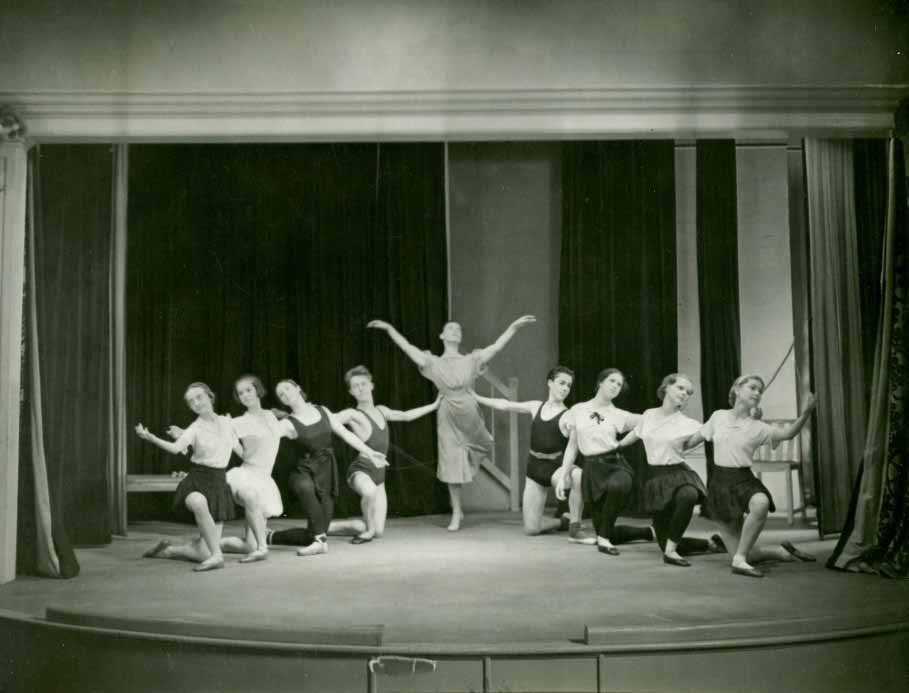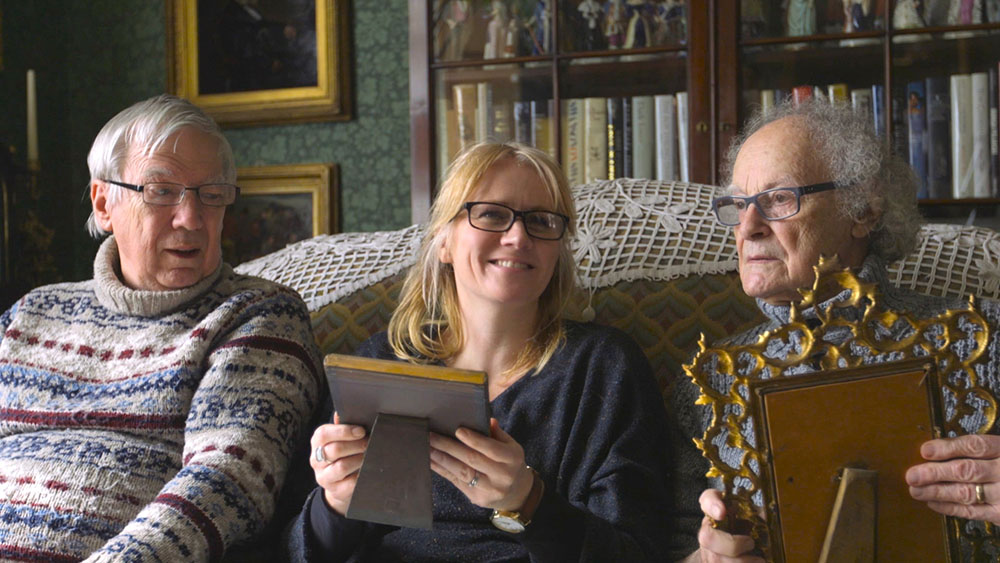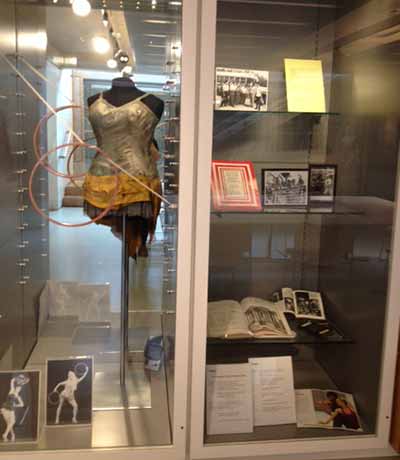Rambert is a name that is familiar to many people across the country; some still refer to it as ‘Ballet Rambert’ even though the Company has not officially used that name since 1987. Others have a vague notion of the Company’s work and some just know they have heard the name before.
Coming from a dance background and being a dance enthusiast it was a name that I knew well and it jumped out at me when I saw the Transforming Archives traineeship advertised on Facebook. I was looking for a new direction; I’d become interested in oral history whilst working as a volunteer for a heritage project and I love Rambert. I didn’t hesitate in making my application.

Marie Rambert and pupils on stage at The Mercury Theatre c1935. Credit Howard Coster
I began my traineeship in October 2015 with a keen interest in dance and dance history but with very little experience of archives. I was soon to discover that an archive is so much more than a place where collected ‘stuff’ is held and preserved.
The Rambert Archive is the first performing arts archive to be awarded accreditation by the National Archives. It documents the unique history of Britain’s national dance company and traces the development of British dance. Rambert was formed as a ballet company by Marie Rambert in 1926 and transformed into a contemporary dance company in 1966. Preserved in the archive are administrative records, costumes, designs for set and costumes, film footage and photographs, music and notation scores, programmes, posters… the list goes on.
Important personal collections are also held here such as those of Marie Rambert and her husband Ashley Dukes, Walter Gore, Andree Howard and Diana Gould. The archive is an invaluable and accessible resource for anyone interested in the development of British ballet, contemporary dance and the history of Rambert.
The main focus of my traineeship has been researching former Company members and preparing for the recording of oral histories. The Company has recently been successful in gaining additional support for oral histories from the Heritage Lottery Fund as part of the wider Rambert at 90 anniversary project.

Chatting with John Webley and Kenneth Bannerman before their interview April 2016
The collection of recordings will be preserved in the Rambert Archive. They give a voice to Rambert’s history and provide an alternative insight into the Company.
I have really enjoyed working on the project. I began my traineeship with lengthy research into the Rambert alumni to produce a good cross-section of possible interviewees and have now completed five interviews – with more arranged for the future. The training budget I receive through the Transforming Archives scheme has been put to good use, including two oral history courses at the British Library and attendance at the Oral History Society’s annual conference.

Archive display showing Rambert’s international touring history
Alongside my main project I have been involved in many other aspects of the archive. I regularly deal with internal and external enquiries and assist researchers in the ICAP reading room. I have also had the opportunity to assist with assessing a donated collection, carried out a shelf audit and repacked archives. Curating displays in the ICAP reading room has probably been one of my favourite activities, as has working with school groups who come for Rambert Experience archive and dance workshops. I have been surprised to discover that public speaking doesn’t necessarily have to result in me breaking out in hives!
I think the most wonderful aspect of my placement is that I have been able to steer my own course through the traineeship. Arike Oke, Rambert’s archivist, has allowed me to grasp the elements that have appealed most to me and she has directed me forward so that I can make the most out of the time I have here. I feel like I have become a useful member of the archive team and really developed some fantastic knowledge about archives, oral history, dance history and Rambert.
I am excited about what will follow once my traineeship comes to an end – I know that I want to extend my knowledge of contemporary dance history and I am also hoping to develop my skills as an oral historian but as I have discovered, the archives and heritage sector offers a world of possibilities and so I am happily keeping my options open to see what comes my way.
Seeking any photos of Audrey Taylor from South Africa in 1940’s. Toured with the Ballet to Australia and New Zealand. Thanks. Les H., Napier, New Zealand.